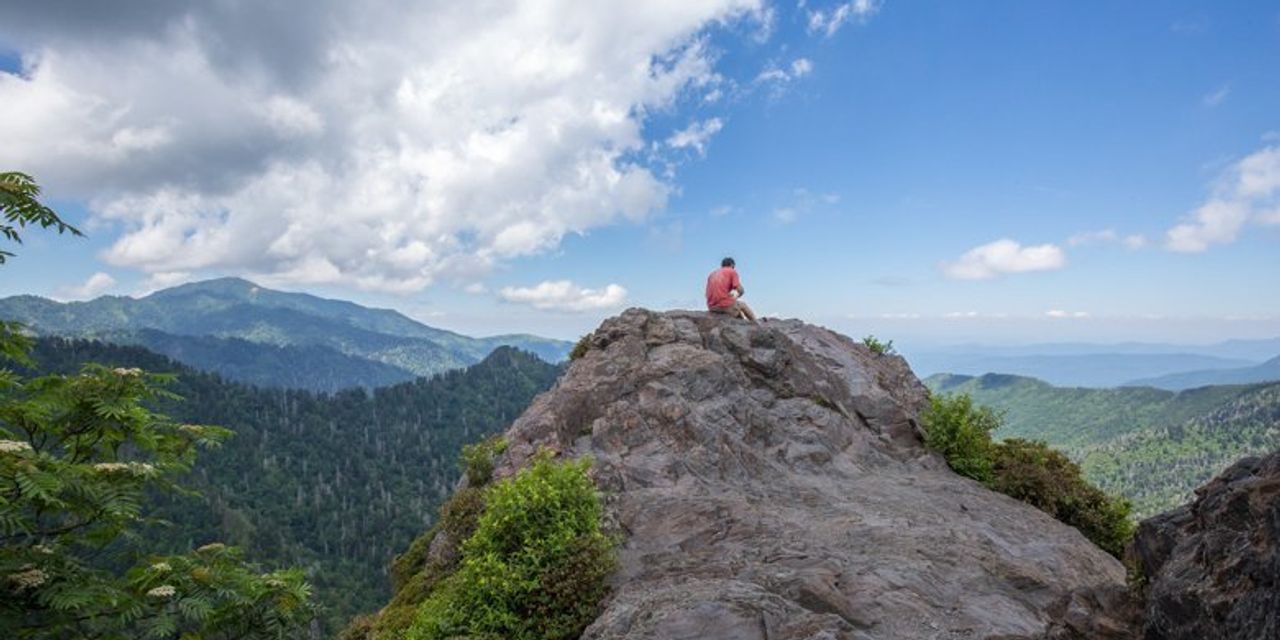I WAS STANDING near my husband, both of us perched carefully on the edge of Twentymile Creek Cascades, while a half-dozen light blue butterflies the size of nickels fluttered around our boots. We could hear the water rushing over rocks below us, the creek swollen from a late-summer storm we’d just barely missed. Around us, it felt as though the forest was breathing, and finally I realized we were, too. Deeply, fully breathing.
Maybe it was because we’d just driven down “The Tail of the Dragon,” a stretch of scenic highway with 318 turns in 11 miles, or maybe it was because this was our first real vacation since the Covid pandemic turned the world upside down, but the calm that settled on us was almost palpable. In this part of Great Smoky Mountains National Park, there are no crowds, no choked parking lots, not even cellphone service. In that moment, it became clear: This is how America’s most popular national park deserves to be experienced.
Look at the numbers, and it’s obvious the term “popular” barely covers it: The Great Smoky Mountains received more than three times as many visitors in 2020 as Yellowstone, last year’s second most-visited national park. And now, over the past year, even more people have headed to this park that straddles the boundary line between eastern Tennessee and western North Carolina, encompassing more than a half-million acres of old-growth forests and some of the tallest mountains in Appalachia. In this stretch of land, more than 85 inches of rain falls a year, supporting more than 20,000 species.
When many consider the Smoky Mountains, their first thoughts often edge toward wildly popular family vacation spots in Gatlinburg, Tenn., and nearby Pigeon Forge, Tenn. There you’ll find a plethora of attractions and distractions from the natural beauty on display, sometimes just a few steps from putt-putt courses, dinner theaters, as-seen-on-TV stores, pancake restaurants and old-timey photography studios.
But even with more than 12 million visitors a year, and record-setting monthly visitation since the park reopened in June 2020 following the pandemic lockdown, it is not only possible but uniquely gratifying to capture moments of solitude here.













































